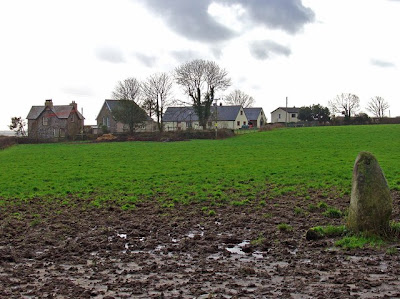(These pictures were kindly lent to me by Carole of Login Post Office - If anyone is able to name those in the pictures - please let me know.)


Compiled by Ruth Roberts (nee Phillips) who lived at Gwenlais, Login, from 1963-73 and attended Ffynnonwen from 1963-7. I have therefore not been in the area for many years and do not profess to have expert knowledge. There follows some snippets of information about Ffynnonwen School and the village of Login. Please feel free to correct me or add information (ruthroberts123@aol.co.uk).








 Aerial view of Calfaria Chapel and Chapel House
Aerial view of Calfaria Chapel and Chapel House




 Cwmmiles Bridge - which had two circular holes either side
Cwmmiles Bridge - which had two circular holes either side


In 1972 they were number five in the Welsh charts (ahead of Max Boyce!)
Deg Uchaf Y Cymro:Rhagfyr 21 1972
1. Deg o ganeuon - Hogia'r Wyddfa
2. Yma mae Nghân - Dafydd Iwan
3. Tecel - Hogia'r Wyddfa
4. Gorau Cymro Cymro Oddi Cartref - Dafydd Iwan
5. O Iesu Mawr - Perlau Taf.
6. Mae Pawb yn Chwarae Gitar - Hogia'r Wyddfa
7. O na le - Max Boyce
8. Cadwaladr - Galwad y Mynydd
9. Gwymon - Meic Stevens
10. Lliwiau - Sidan
If you wish to read about some of Euros's achievements go to:-http://www.s4c.co.uk/codicanu/2/cgi-bin/codicanu.pl?rm=choir_masters;choir=2;l=e
Perlau Taf By TREVOR JONES, B.SC., PH.D. (The Taf Pearls)
Mention of Perlau Tâf nowadays conjures up thoughts of the Welsh Pop Group, who hail from Whitland, but the phrase has a deeper connotation, as well as historical significance, for within living memory the Tâf river has been fished for pearls. These have been found, and supposedly are still to be found, in the freshwater mussel (Margaritifera margaritifera).
To date, no historical reference to the presence of pearl-mussels in the Tâf has been discovered but such mussels have been, and still are being caught by fishermen using worm as bait for salmon, sewin and trout. In fact, the pearl-mussel must cohabit with fish in the same water in order to complete the parasitic phase in its life cycle.
Full story at:-http://carmarthenshirehistorian.org/cgi-bin/twiki/view/Historian/PerlauTaf
 (Boy's back playground - now put to grass)
(Boy's back playground - now put to grass) (Girls front playground)
(Girls front playground) box of six numbers - in two rows), lots of skipping - both individually and with a long rope held by two girls. We also played 'clackers'- a craze at the time - but now banned for health & safety!
box of six numbers - in two rows), lots of skipping - both individually and with a long rope held by two girls. We also played 'clackers'- a craze at the time - but now banned for health & safety!
Edward Lhuyd, around 1700, had heard of a peculiar stone at Felin Cwrt. He also mentioned St Maugan's Church near Fronrhodyn, in Cilymaenllwyd parish. W.J.Thomas, Penrallt, in his diaries of 1870s, mentioned a field called 'Parc yr Eglwys' - which might had been on or near where an early church stood.
A tumulus is mentioned as being at Rhos Coynant - but it was levelled in 1812.
Finds
Maesgwyn, Parc y gerddi bach - Stone Axe, hammer head, perforated dolerite - appeared frst in Early Bronze Age. Now in Carmarthen Museum.
At hamlet of Maenor y Merydd (in a field south of Rhydymerydd) - an earthen vessel with considerable quantity of Roman coins.







 Login Station in August 1967 (Photo by Nick Catford)
Login Station in August 1967 (Photo by Nick Catford) Login Station in August 1967 (Photo by Nick Catford)
Login Station in August 1967 (Photo by Nick Catford)



 Wooden cupboard - I think this is the old bookcase?
Wooden cupboard - I think this is the old bookcase? Some wooden desks still remain
Some wooden desks still remain Coathooks in the small porch
Coathooks in the small porch The porch
The porch Wooden panelling and old school desk and chair
Wooden panelling and old school desk and chair
 What are these?
What are these? Original floorboards in the small infants room. They have been replaced by new flooring in the main large room
Original floorboards in the small infants room. They have been replaced by new flooring in the main large room
 Old original desks
Old original desks
 High windows in the infant's room
High windows in the infant's room Doorway from kitchen area
Doorway from kitchen area Rough wall - which was once external
Rough wall - which was once external Original firplace in the little infant's room
Original firplace in the little infant's room
Houses at Ffynnonwen (with old school and schoolhouse on left)
© Copyright Dylan Moore and licensed for reuse under this Creative Commons Licence